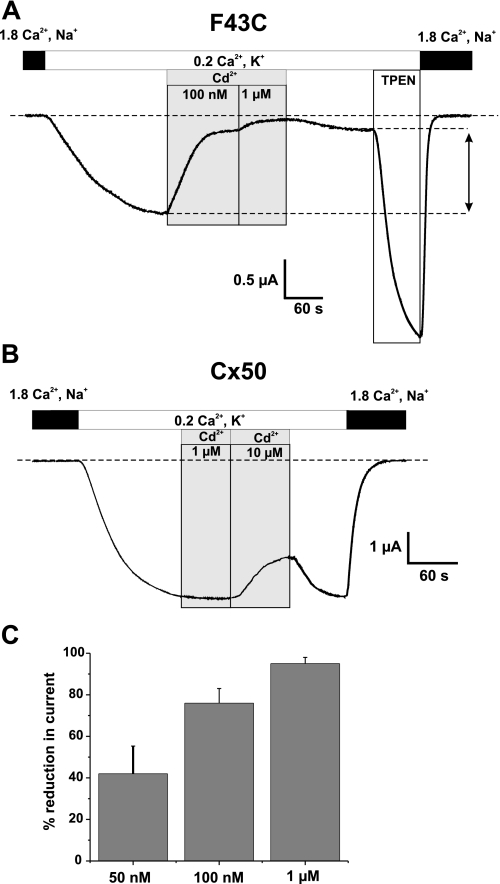FIGURE 3.
F43C hemichannels exhibit high-affinity binding to metal ions. A, shown are membrane currents in an oocyte voltage clamped at -40 mV. Application of Cd2+ caused a strong reduction in the inward current in a concentration dependent manner with 100 nm and 1 μm reducing currents by ∼80 and ∼95%, respectively. Perfusion of oocytes with Cd2+-free solution caused only a modest recovery of current (∼30% of control), indicating that Cd2+-bound hemichannels are locked closed. Recovery of channel activity after Cd2+ block required TPEN. The increase in inward current caused by TPEN was substantially higher in magnitude compared with the current before Cd2+ application, indicating that a large fraction of hemichannels were locked closed. B, the same concentrations of Cd2+ have no effect on Cx50 WT hemichannels. Inhibition of wild-type hemichannels occurs only at substantially higher concentrations (10 μm) and was fully reversible upon washout. C, bar graph summarizing the effect of 50 nm (n = 9), 100 nm (n = 8) and 1 μm (n = 16) Cd2+ on F43C hemichannels. Bars represent the mean ± S.E. of block. The concentration dependence indicates half-maximal reduction in current occurring between 50 and 100 nm for Cd2+.

